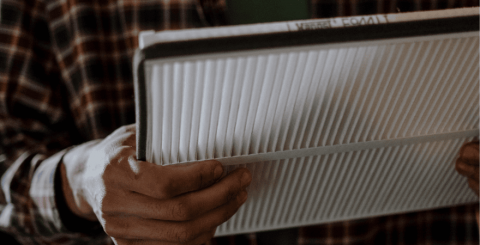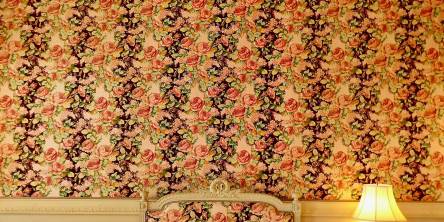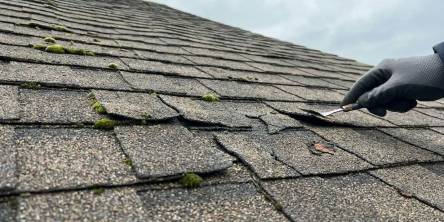Comparing Fiberglass and Pleated Air Filters

When it comes to your home's air filter, there are a few main options: fiberglass and pleated air filters. You may not think about them often, but these two types of filtration products can have big impacts on your overall indoor air quality and even energy bills.
So how do you decide which one is best suited for your particular space? The answer really depends on certain factors like the size of your home and the type of airborne particles that need to be filtered out.
In this article, we'll take an in-depth look at both fiberglass and pleated air filters to better understand their individual benefits so you can make an informed decision when it comes time to replace yours.
What are fiberglass and pleated air filters?
Air filters are an essential part of air conditioning, air purification, and air ventilation systems. They trap dust, dirt, and other airborne particles to ensure air circulating throughout our homes and businesses is as healthy and clean as possible. Fiberglass air filters and pleated air filters are two common types of air filters designed to keep the air we breathe clean. Fiberglass air filters are relatively inexpensive but should be replaced often for optimal filtration efficiency. Conversely, pleated air filters use finely woven media that typically provides better filtration than fiberglass air filters, but can often be more costly to regularly maintain. Ultimately it's important to research the options available so that you can make an informed decision about which type of air filter is most appropriate for your particular needs; whatever type you choose its efficiency in trapping pollutants is worth its weight in gold!
Quality
Fiberglass air filters are generally made from spun-fiberglass fibers that form a mesh-like structure. This makes them an excellent option for trapping large particles in the air. However, they are less effective at trapping small particles like dust mites or pet dander.
On the other hand, pleated air filters are made from tightly woven paper or synthetic materials that can trap even the smallest airborne particles. As such, pleated air filters typically like 18x20x1 air filter provide a higher level of filtration than fiberglass filters.
Material
Fiberglass and pleated air filters have their advantages regarding construction materials. Fiberglass panel filters are manufactured with stiff glass fibers, making them particularly resilient to block virtually any particles they come in contact with that have a minimum size of 0.3 microns. On the contrary, pleated air filters tend to absorb high volumes of moisture, protecting your duct system from biological contaminants and capturing small amounts of dust from entering the airflow itself.
Fiberglass is lightweight and inexpensive, making it an attractive choice for those on a budget who don't require high levels of filtration. Pleated air filters are more expensive but offer superior filtration levels thanks to their tighter weave design.
Efficiency
Regarding efficiency, both types of filters can do an excellent job if they are maintained properly. However, pleated air filters tend to be more efficient because they can trap smaller particles than fiberglass filters can. They also last longer since they don't need to be replaced as frequently as fiberglass filters due to their tighter weave design.
Cost
As mentioned above, fiberglass air filters are typically much cheaper than pleated ones due to their lower cost of production and simpler design. However, pleated air filters will last longer, so you won't need to replace them as often—which means they may end up being cheaper in the long run due to reduced replacement costs.
Maintenance
Both types of air filters require regular maintenance to stay clean and function properly. With fiberglass air filters, you should change them every 30 days or so, depending on the amount of use your HVAC system gets; with pleated ones, you may be able to go up more than three months before needing a new one since they tend to hold up better over time due to their tighter weave design which prevents dust from getting trapped inside the air filter itself over time like what happens with fiberglass ones.
Final Verdict
Both fiberglass and pleated air filters have pros and cons regarding quality, material, efficiency, cost, and maintenance. Ultimately, the best option for your home depends on your individual needs and budget.
If you're looking for maximum efficiency at an affordable price, then a pleated 18x20x1 air filter offers excellent value. For those on a tight budget, however, fiberglass filters may be the way forward. Whichever type you choose, keep up with regular maintenance, so your filter keeps working effectively.
Similar Articles
Water has an uncanny ability to find its way into places it shouldn't be.
There's a particular feeling that comes with stepping into your backyard on a Saturday morning and actually wanting to be there.
Bathrooms are among the most frequently used spaces in any home, yet they’re often overlooked when it comes to meaningful design.
Luxury interiors are not built through clutter. They come through calm. They come through balance. They come through the quiet presence of well-chosen materials.
Discover modern wallpaper styles that elevate any room. Explore 2025–2026 trends, peel-and-stick options, textures, accent walls, and tips for choosing the right look.
Energy efficiency has become a top priority for homeowners as energy costs rise and comfort expectations increase. While many people focus on windows, insulation, or appliances, the roof plays a major role in regulating indoor temperatures.
Refresh your driveway without replacing it. Discover budget-friendly cleaning, repair, resurfacing, and design ideas that boost curb appeal and durability.
We all know that roofs don’t last forever, but how do you know when it's really time to replace yours? After all, your roof is out of sight, out of mind, right?
As winter settles in and temperatures drop, families across the country brace themselves for the inevitable spike in energy bills.









